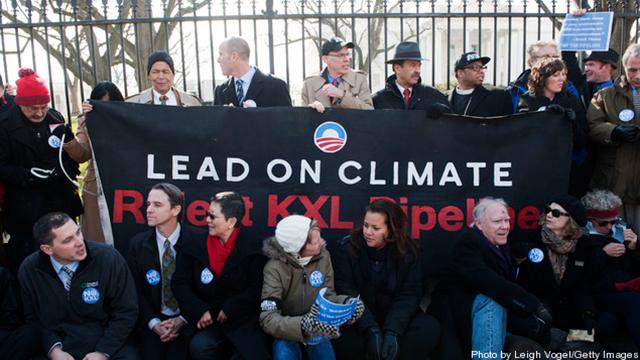
On Thursday we found out via Inside Climate News and Brad Johnson over at Grist that the environmental impact statement the State Department just released on the Keystone XL pipeline was written by a private consulting firm being paid by the pipeline’s owner.
This obviously raises concerns about conflicts of interest with the report itself, but it also highlights the problems with turning government work and analysis over to private firms with possible financial ties to other private entities who may be affected by that work and analysis — a phenomenon that’s been underway since the 1990s.
State’s report, which found that the pipeline was “unlikely to have a substantial impact on the rate of development in the oil sands,” and will “not likely result in significant adverse environmental effects,” was written by Environmental Resources Management (ERM).
Several years ago, Cardno Entrix, another private consultancy, was contracted by TransCanada to handle the State Department’s initial draft of the environmental impact statement, the Department’s hearings on the pipeline, and even its Keystone XL website.
As Johnson reported, ERM was paid “an undisclosed amount under contract to TransCanada” for the assessment:
The documents from the ERM-TransCanada agreement are on the State Department’s website, but payment amounts and other clients and past work of ERM are redacted. In the contract documents, ERM partner Steven J. Koster certifies that his company has no conflicts of interest. He also certifies that ERM has no business relationship with TransCanada or “any business entity that could be affected in any way by the proposed work” (notwithstanding the impact statement contract itself). In a cover letter, Koster promises State Department NEPA Coordinator Genevieve Walker that ERM understands “the need for an efficient and expedited process to meet the demands of the desired project schedule.” An investigation by Inside Climate News finds that ERM’s report draws from work done by other oil industry contractors, Ensys Energy and ICF International.
According to State’s report, the department “directed the preparation,” but the project’s manager is the only government official actually listed on the cover page.
Inside Climate News reported Ensys has worked with ExxonMobil, BP and Koch Industries, though Ensys president Martin Tallet emphasized the consulting firm has also worked with the Environmental Protection Agency, the Department of Energy, and the World Bank.
“We don’t do advocacy,” Tallett told Inside Climate News, pointing out that EnSys employees acted as expert witnesses for various state water agencies and against the oil industry in court cases on groundwater contamination from MBTE, a gasoline additive. “If we were the pet of government agencies or oil companies, the other side wouldn’t come to us.”
ICF International declined to comment on the Keystone report.
According to both David Driesen, a law professor at Syracuse University and a former attorney for the Natural Resources Defense Council, and Joel A. Mintz, a law professor at Florida’s Nova Southeastern University, conflicts of interest can be difficult to avoid in practice, whatever the official statements:
“I think the question of conflict of interest is a legitimate one,” Driesen said. If consulting firms are “used to working for industry clients, it’s possible they would subtly orient their analysis in a certain way, and that could be reflected” in the document. “The marketplace and ethics sometimes collide,” said Mintz, who is a member scholar at the Center for Progressive Reform, which favors green policies. “If their livelihood comes from consulting for the oil and gas industry, I think it would be expected they’d be sympathetic to their future and past clients. They’ll want to keep consulting.”
As Inside Climate News points out, State’s Keystone report is actually part of a larger trend, spanning more than a decade, of government farming out work it used to do in-house to private contractors.
While the Defense Department has driven the majority of the contracting the United States government does with private firms, the practice ramped up in other departments significantly in the 1990s with the arrival of then-Vice President Al Gore’s “Reinventing Government” initiative. Since then, the federal workforce has shrunk as the contractor workforce has grown.
According to a report by the Center for Public Integrity, the government was spending $200 billion a year on private contractors as of 2003. A scholar at the Brookings Institution named Paul Light called this workforce the “shadow government,” estimating its size in 1999 at 5.6 million.
Government agencies now routinely outsource reports like State’s environmental impact statement because they don’t have the staff or resources to handle the work in-house, and given the ubiquity of consulting firms’ work with industry, it’s difficult to find a company that doesn’t have industry ties.
Kathleen Clark — a practicing lawyer and law professor at Washington University in St. Louis, and an expert on government ethics — told Inside Climate News that, “In general, the government has rather strict standards for conflict of interest for its own employees, and in general when it outsources work to contractors, it doesn’t outsource those standards.”
3 WAYS TO SHOW YOUR SUPPORT
- Log in to post comments















